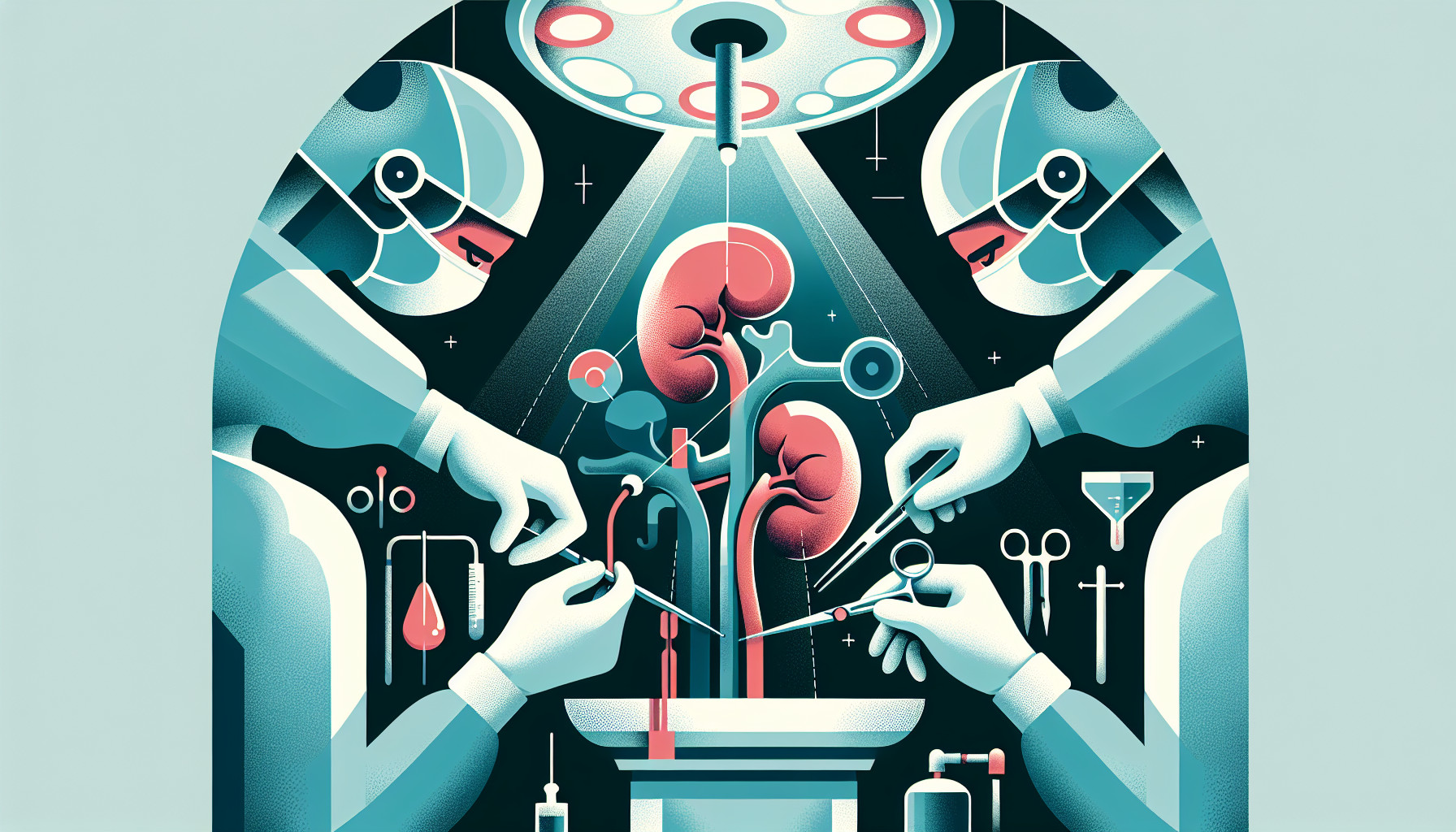Our Summary
This research paper is about a study that compared two types of kidney removal surgery for living donors: the robot-assisted laparoscopic technique (RDN) and the traditional laparoscopic technique (LDN). The researchers looked at several databases for studies from 1999 to the present. They looked at various factors such as the length of the surgery, the amount of time the kidney was without blood supply, estimated blood loss, and the length of the hospital stay.
The results showed that the traditional method (LDN) had a shorter surgery time, less time the kidney was without blood supply, and less estimated blood loss. However, the robot-assisted method (RDN) had lower scores for post-surgery pain. The research also found no significant difference between the two methods in terms of hospital stay length, post-surgery kidney function in donors, kidney function in recipients, and post-surgery complications for donors.
In simpler terms, the study suggests that if the robot-assisted technique is performed correctly, it could be a good alternative to the traditional method for removing a kidney from a living donor.
FAQs
- What are the two types of kidney removal surgery for living donors that the research paper compared?
- According to the research, what are the advantages and disadvantages of robot-assisted laparoscopic technique (RDN) and the traditional laparoscopic technique (LDN)?
- Does the research suggest that the robot-assisted technique could be a feasible alternative to the traditional method for removing a kidney from a living donor?
Doctor’s Tip
A doctor might advise a patient considering laparoscopic nephrectomy to ask about the option of robot-assisted surgery, as it may result in less post-surgery pain compared to the traditional laparoscopic technique. It’s important to discuss the potential benefits and risks of each approach with your healthcare provider to determine the best option for you.
Suitable For
Patients who are typically recommended for laparoscopic nephrectomy include:
Living kidney donors: Laparoscopic nephrectomy is commonly performed on living kidney donors who are willing to donate one of their kidneys to a family member, friend, or stranger in need of a kidney transplant.
Patients with kidney cancer: Laparoscopic nephrectomy may also be recommended for patients with kidney cancer who need to have a portion or all of their affected kidney removed.
Patients with kidney disease: In some cases, patients with certain kidney diseases may also be recommended for laparoscopic nephrectomy if the affected kidney is not functioning properly and needs to be removed.
Patients with kidney stones: Laparoscopic nephrectomy may be considered for patients with large kidney stones that cannot be treated with other non-invasive methods.
Overall, laparoscopic nephrectomy is a minimally invasive surgical procedure that offers several advantages over traditional open surgery, including faster recovery times, less post-operative pain, and reduced risk of complications. However, the decision to undergo laparoscopic nephrectomy should be made on a case-by-case basis after consulting with a healthcare provider.
Timeline
Before laparoscopic nephrectomy, a patient will typically undergo various tests and evaluations to determine if they are a suitable candidate for surgery. This may include blood tests, imaging scans, and consultations with healthcare providers. The patient will also be instructed on how to prepare for the surgery, such as fasting before the procedure.
During the laparoscopic nephrectomy surgery, the patient will be placed under general anesthesia. The surgeon will make several small incisions in the abdomen to insert a camera and specialized instruments to remove the kidney. The surgery typically lasts a few hours.
After the surgery, the patient will be monitored in the recovery room before being transferred to a hospital room. They may experience some pain and discomfort, which can be managed with pain medication. The patient will be encouraged to walk around and perform breathing exercises to prevent complications such as blood clots.
The patient will typically stay in the hospital for a few days for monitoring and recovery before being discharged. They will be given instructions on how to care for the incision sites, manage any pain, and gradually resume normal activities. Follow-up appointments will be scheduled to monitor the patient’s recovery and kidney function.
Overall, laparoscopic nephrectomy is a minimally invasive procedure that offers a quicker recovery time and less pain compared to traditional open surgery. Patients can expect to return to their normal activities within a few weeks after surgery.
What to Ask Your Doctor
Some questions a patient should ask their doctor about laparoscopic nephrectomy include:
- What are the potential risks and complications associated with laparoscopic nephrectomy?
- How experienced are you in performing laparoscopic nephrectomy procedures?
- Can you explain the differences between the traditional laparoscopic technique and the robot-assisted laparoscopic technique for kidney removal?
- What are the expected outcomes and recovery time for each type of laparoscopic nephrectomy?
- How will my kidney function be affected after the surgery?
- Will I need to take any medications or follow a specific diet after the procedure?
- How long will I need to stay in the hospital after the surgery?
- What follow-up care will be needed after the surgery?
- Are there any long-term effects or risks associated with having one kidney?
- Can you provide me with information on any support groups or resources for living donors?
Reference
Authors: Wang H, Chen R, Li T, Peng L. Journal: Clin Transplant. 2019 Jan;33(1):e13451. doi: 10.1111/ctr.13451. Epub 2019 Jan 7. PMID: 30461073
